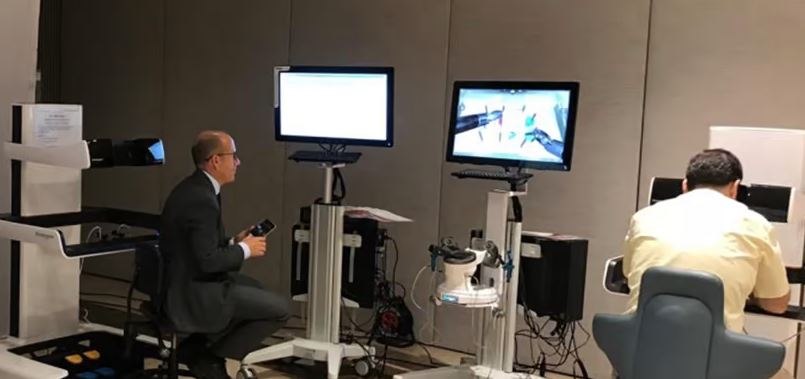Customer Company Size
Large Corporate
Region
- America
Country
- United States
Product
- Arbor Edge Defense® (AED)
- Managed AED
Tech Stack
- DDoS Protection
- Firewall
Implementation Scale
- Enterprise-wide Deployment
Impact Metrics
- Productivity Improvements
- Digital Expertise
Technology Category
- Cybersecurity & Privacy - Network Security
Applicable Industries
- Education
Applicable Functions
- Business Operation
Use Cases
- Cybersecurity
Services
- System Integration
- Testing & Certification
About The Customer
One of the largest Independent School Districts (ISD) in Texas serves a number of cities, towns and portions of unincorporated Harris County. For the 2018–2019 school year, the district enrolled over 40,000 students. The district had not seen any large attacks or a high volume of attacks over a period of two years, so they felt that the DDoS protection provided by their internal infrastructure, namely their firewalls, was sufficient to meet their needs. Their needs changed once the pandemic hit and they were forced to move to a virtual environment for everything their students and teachers required access to on the network.
The Challenge
The Independent School District (ISD) in Texas had not experienced any significant attacks or a high volume of attacks over a period of two years, so they believed that the DDoS protection provided by their internal infrastructure, namely their firewalls, was sufficient to meet their needs. However, their needs changed once the pandemic hit and they were forced to move to a virtual environment for everything their students and teachers required access to on the network. During testing and prior to the school year they did not feel any effects from DDoS activity, so they assumed their firewalls were taking care of it. Once the school year began and the network was overwhelmed with legitimate users in the form of teachers, students and parents attempting to gain access to virtual meetings, virtual classrooms and email, the cracks began to show and many of the districts’ stakeholders could not access the network. This was determined to be the combination of the illegitimate traffic along with legitimate traffic overpowering the system.
The Solution
The ISD’s trusted partner reached out to the NETSCOUT Arbor team for help. In the initial analysis, they were not sure which product should be recommended but after a discussion with the network operators they decided on the AED 2600. The ISD requested for a proof of concept (POC) or try and buy prior to purchasing. During the POC period, they realized that they did not have the required bandwidth within current staff to manage and maintain the AED so they could get the most out of it by fine tuning the appliance to take advantage of NETSCOUT Arbors world class Threat Intelligence from the ATLAS® and ASERT teams. By the end of the POC, they decided that they would also engage NETSCOUT’s managed services team to manage and maintain their AED implementation. AED is the on-premise, always-on, perimeter defense that will identify and mitigate all DDoS traffic coming into their network. AED will also identify and block any IoCs that are attempting to communicate with the outside world, eliminating potential data breaches from malware or ransomware.
Operational Impact
Quantitative Benefit

Case Study missing?
Start adding your own!
Register with your work email and create a new case study profile for your business.
Related Case Studies.

Case Study
Revolutionizing Medical Training in India: GSL Smart Lab and the LAP Mentor
The GSL SMART Lab, a collective effort of the GSL College of Medicine and the GSL College of Nursing and Health Science, was facing a challenge in providing superior training to healthcare professionals. As clinical medicine was becoming more focused on patient safety and quality of care, the need for medical simulation to bridge the educational gap between the classroom and the clinical environment was becoming increasingly apparent. Dr. Sandeep Ganni, the director of the GSL SMART Lab, envisioned a world-class surgical and medical training center where physicians and healthcare professionals could learn skills through simulation training. He was looking for different simulators for different specialties to provide both basic and advanced simulation training. For laparoscopic surgery, he was interested in a high fidelity simulator that could provide basic surgical and suturing skills training for international accreditation as well as specific hands-on training in complex laparoscopic procedures for practicing physicians in India.

Case Study
IoT platform Enables Safety Solutions for U.S. School Districts
Designed to alert drivers when schoolchildren are present, especially in low-visibility conditions, school-zone flasher signals are typically updated manually at each school. The switching is based on the school calendar and manually changed when an unexpected early dismissal occurs, as in the case of a weather-event altering the normal schedule. The process to reprogram the flashers requires a significant effort by school district personnel to implement due to the large number of warning flashers installed across an entire school district.

Case Study
Implementing Robotic Surgery Training Simulator for Enhanced Surgical Proficiency
Fundacio Puigvert, a leading European medical center specializing in Urology, Nephrology, and Andrology, faced a significant challenge in training its surgical residents. The institution recognized the need for a more standardized and comprehensive training curriculum, particularly in the area of robotic surgery. The challenge was underscored by two independent studies showing that less than 5% of residents in Italian and German residency programs could perform major or complex procedures by the end of their residency. The institution sought to establish a virtual reality simulation lab that would include endourological, laparoscopic, and robotic platforms. However, they needed a simulator that could replicate both the hardware and software of the robotic Da Vinci console used in the operating room, without being connected to the actual physical console. They also required a system that could provide both basic and advanced simulation training, and a metrics system to assess the proficiency of the trainees before they performed surgical procedures in the operating theater.

Case Study
Edinburgh Napier University streamlines long-distance learning with Cisco WebEX
• Geographically dispersed campus made in-person meetings costly and inconvenient.• Distance-learning programs in Malaysia, India, and China required dependable, user-friendly online tools to maximize interaction in collaborative workspaces.• Virtual learning environment required a separate sign-in process, resulting in a significant administrative burden for IT staff and limited adoption of collaboration technology.

Case Study
8x increased productivity with VKS
Before VKS, a teacher would spend a lot of time showing a group of 22 students how to build a set of stairs within a semester of 120 hours. Along with not leaving the teacher much time to provide one-on-one support for each student to properly learn carpentry, it also left a considerable amount of room for error. Key information would be misinterpreted or lost as the class was taught in the typical show-and-tell way.

Case Study
Scalable IoT Empowering GreenFlex's Sustainable Growth
GreenFlex, a company that supports sustainable development, decarbonization, and energy efficiency, faced several challenges in its quest to expand its business. The company needed to deploy a robust and sustainable IoT technology to support its growth. It was crucial for them to monitor and control devices at customer sites in a safe and reliable manner. They also needed to integrate devices across a range of communication protocols and gather and act on data to meet efficiency targets. GreenFlex had previously built IoT capabilities into its digital platform, GreenFlexIQ, to monitor and manage customer sites remotely. However, they soon realized that they needed a new platform to support their ambitions. They needed a platform that could scale to connect more devices for production management and make it easier for the operations team to manage devices in the field.







